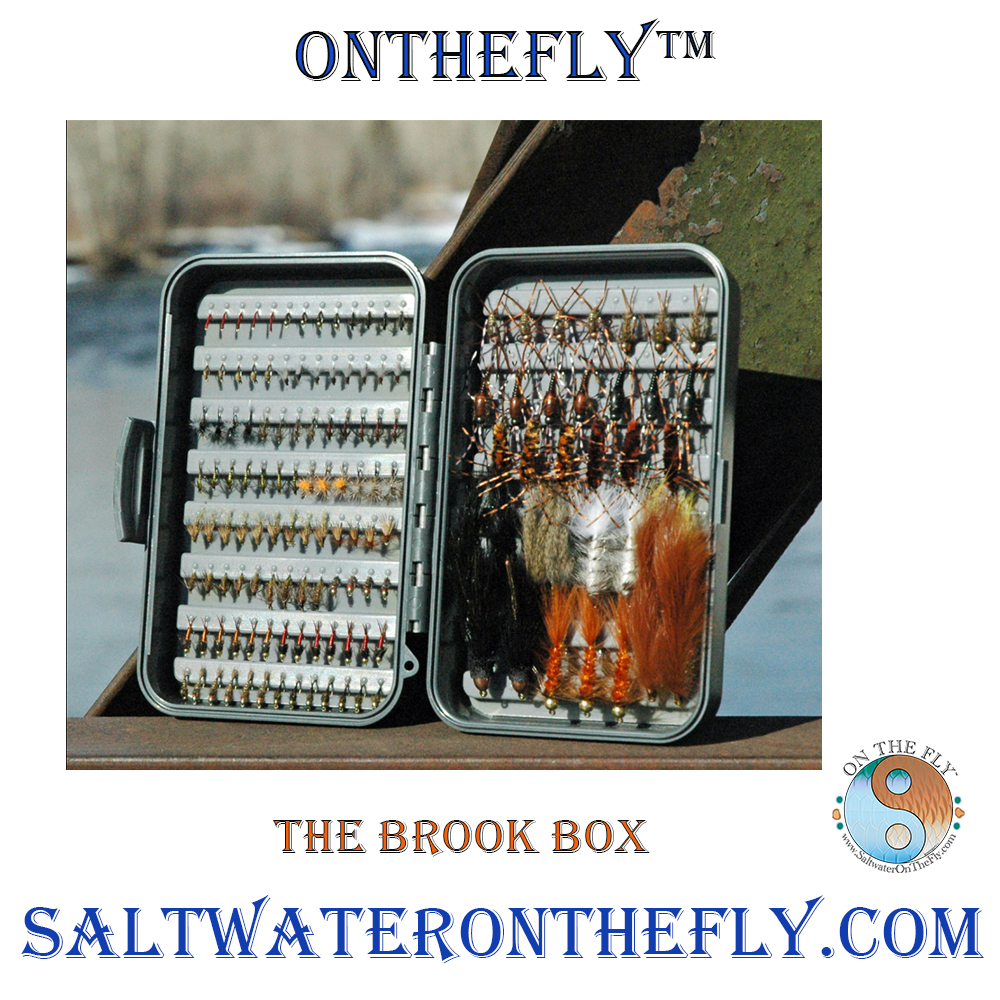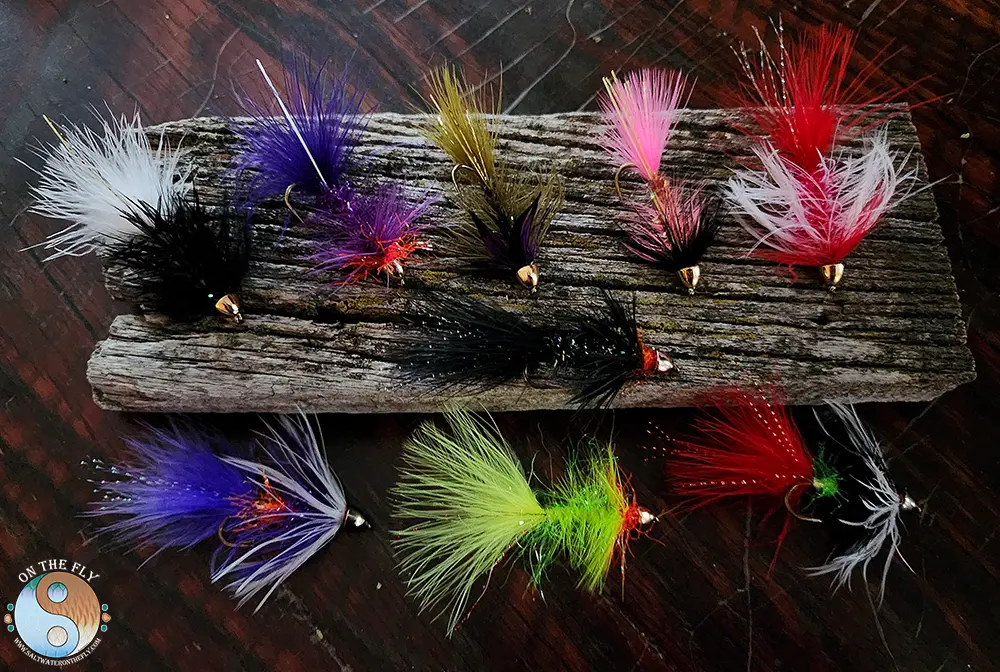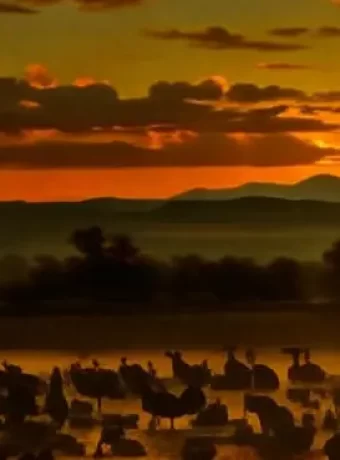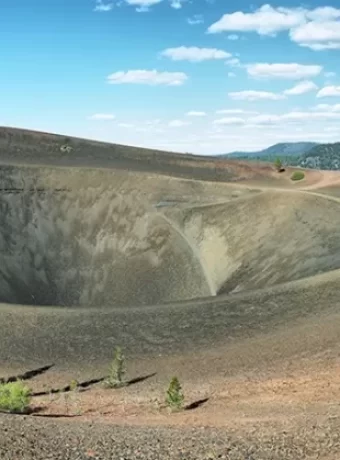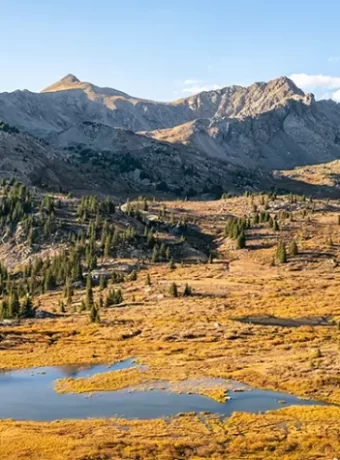Madison River Fly Fishing – Yellowstone National Park to the Missouri River
Casting a line into the Madison River’s flow in Montana transforms fly fishing from a mere pastime into an epic journey across some of America’s most stunning vistas. From its origins at Yellowstone National Park to the challenging waters of Lower Madison, this river is a fly fisher’s dream. Navigating the varied currents, grasping the timing of insect emergences and methods, alongside comprehending why anglers globally are enchanted by “the 50-Mile Riffle,” transforms into an enlightening journey.
Whether you’re planning your first trip or looking to deepen your knowledge, we’ve got insights on essential gear and tips for success on these legendary waters. Let’s dive into what makes Madison River fly fishing an unforgettable experience.
Table Of Contents:
- Exploring the Origins of the Madison River
- The Formation of Quake Lake
- Fishing Seasons and Techniques on the Madison River
- The “50-Mile Riffle” and Its Significance
- Fly Fishing Between Hegben Lake and Quake Lake
- Navigating Upper Madison
- Boating and Fly Fishing from Lyons Bridge to Ennis
- Tackling Lower Madison’s Fast-Paced Waters
- Essential Gear for Successful Fly Fishing on Madison River
- FAQs in Relation to Madison River Fly Fishing, Montana Fly Fishing, Fly Fish Montana
- Conclusion of Madison River Fly Fishing
- Icelandic Fly Fishing Adventures or?
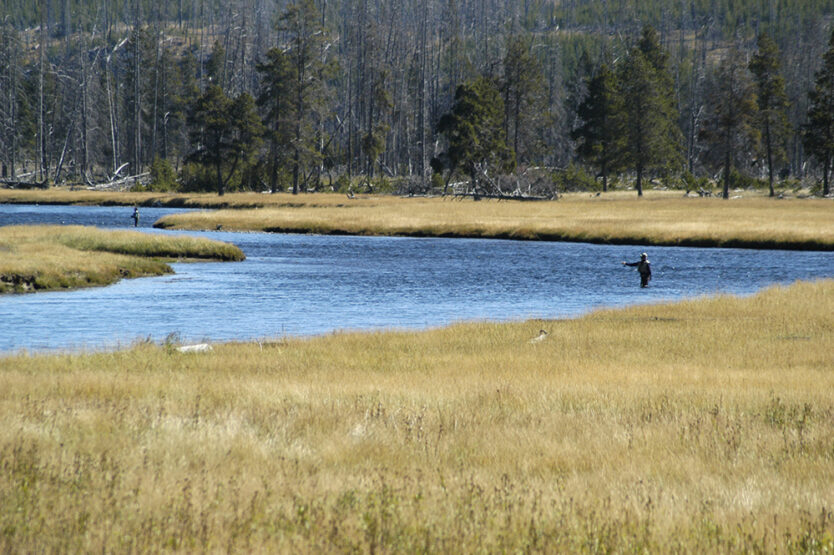
Exploring the Origins of the Madison River
The story of the Madison River is as captivating as its waters, beginning in a place that feels like it’s straight out of a fairy tale. Yellowstone National Park isn’t just home to geysers and grizzlies; it’s also where this legendary river starts its journey. Book with Guides in the know Madison River Guides.
The Confluence of Gibbon and Firehole Rivers
Our tale begins at an almost mythical meeting point within Yellowstone: the confluence of the Gibbon and Firehole Rivers. At this juncture, the merging of these waters gives rise to the Madison River, christened in honor of James Madison, the nation’s fourth leader. The setting couldn’t be more dramatic if it tried—with steaming geothermal features nearby lending an otherworldly atmosphere to this cradle of life for countless fish species.
Fly fishing enthusiasts might find their pulse quickening just thinking about these origins—after all, knowing where your quarry comes from adds depth to any angling adventure. Both contributing rivers have their own unique characteristics before they merge: while Firehole brings warmth from thermal springs, making it hospitable even when surrounding waters freeze over in winter; Gibbon offers cooler flows descending from higher altitudes.
Brook Fly Box’s inserts are self healing silicone and American Made. Woolly Buggers are a great Streamer Pattern on the Madison River. Click Images to Learn More.
This blending creates perfect conditions for trout throughout much part year but makes one ponder how such diverse streams can coexist so harmoniously. It’s a testament to nature’s balance—and perhaps a lesson on unity we could all learn something from.
The Formation Of Quake Lake
In 1959, Mother Nature decided she wasn’t done sculpting her masterpiece—the landscape around what would become known as Quake Lake was dramatically altered by an earthquake measuring 7.5 on Richter scale. The event caused massive landslides, effectively damming up part river creating lake overnight. This natural disaster reshaped region added new chapter already storied history local ecology fishing community alike.
Tales bravery resilience emerged aftermath quake fishermen guides adapted changed environment Though loss human life tragedy impact ecosystem initially uncertain turned out boon anglers As settled into newly formed habitat thrived once again proving resilience under pressure And today remains popular spot thanks unique combination scenic beauty plentiful catch opportunities.
Fishing Seasons and Techniques on the Madison River
No matter time year you visit there always seems be action happening below surface Understanding seasonal changes hatches key unlocking potential each cast From early spring runoff late autumn browns migrating upstream spawn knowledgeable angler can find success employing variety techniques suited current conditions Whether nymphing during colder months or casting dry flies summer evenings knowledge gained years experience handed down generations invaluable tool box anyone wishing master art fly fishing these historic waters.
To truly appreciate everything on offer, though, you must spend days wading through channels and drifting.
Dive into the Madison River’s origins in Yellowstone, where the Firehole and Gibbon Rivers meet. This unique blend creates ideal trout conditions, showcasing nature’s balance. The 1959 quake formed Quake Lake, adding to the river’s allure for anglers with its mix of beauty and bounty.
The Formation of Quake Lake
Imagine the Madison River flowing freely through southwestern Montana’s rugged landscapes. Now, picture a dramatic event that changes everything overnight. This isn’t the plot of a blockbuster movie but the real story behind the formation of Earthquake Lake, or as it’s more affectionately known, Quake Lake.
The Confluence of Gibbon and Firehole Rivers
The Madison River starts its journey at Yellowstone National Park, where two smaller rivers—the Gibbon and Firehole—meet. In unison, these tributaries forge the renowned stream celebrated as an angler’s dream haven. The confluence marks not just the birthplace of a river but also sets the stage for one of nature’s most unexpected events further downstream.
This peaceful merger belies what was to come in 1959 when an earthquake would test the resilience of these waters and their surrounding ecosystems.
Quake Night: August 17th, 1959
In August 1959, a powerful magnitude-7.5 earthquake struck near Hebgen Lake, just northwest of Yellowstone National Park. This seismic activity caused massive landslides, dubbed as “The Night America Shook,” blocking off parts of the river. Spanning over six miles long, this sudden damming created what we now know as Quake Lake.
This cataclysmic event reshaped more than just terrain; it altered habitats and life cycles, forcing both humans and animals alike to adapt to new realities. An entire campground was engulfed, forever changing local lore and inspiring tales of resilience amidst adversity.
Madison’s Flow Post – Earthquake
Post-quake scenario left sections of the upper Madison River between Hebgen Lake virtually inaccessible, while others transformed into fertile grounds for anglers looking for unique fly fishing experiences among the newly formed landscapes of unparalleled beauty and challenge. Fishing techniques had to be adjusted to tackle unpredictable currents and submerged obstacles, revealing yet another layer of complexity added to the rich tapestry of stories emanating from the heart of the Rocky Mountains.
Navigating Changed Waterscapes
Today’s angling provides a peek into history, though it’s been jazzed up with contemporary flair. As you navigate your way downriver towards Ennis or wade carefully selected spots in the upper stretches, you can’t help but feel a connection to those who witnessed firsthand the transformation. Understandably, efforts in conservation management have been critical in maintaining the health of the ecosystem and ensuring future generations have the opportunity to experience the wonder and marvel it has to offer.
Ultimately, it serves as a reminder of the power of nature and its capacity to adapt and change. For those who dive deep into nature’s embrace or merely admire its splendor from a distance, this exemplifies the ever-changing and vibrant tapestry of our environment. This is essentially a nudge for us to honor and safeguard our surroundings, ensuring they remain vibrant for those who will come after us.
Quake Lake’s formation from a 1959 earthquake is not just history; it transformed Madison River fly fishing and shows nature’s power to change landscapes overnight. Today, anglers adapt techniques for its unique challenges, connecting us to past events while reminding us of conservation’s importance
Fishing Seasons and Techniques on the Madison River
The Confluence of Gibbon and Firehole Rivers
Where the warm waters of Firehole meet the colder, clearer flows from Gibbon, that’s where our beloved Madison begins. At this juncture, an unparalleled habitat comes into being, perfectly suited for diverse trout populations. Balmy waters foster a continuous emergence of bugs, turning it into paradise for those casting flies.
In spring, as snowmelt increases flow rates and water clarity decreases slightly, large nymphs become your best bet. Think stoneflies or streamer patterns that mimic small fish being flushed out by stronger currents. As summer takes hold and water temperatures rise, focus shifts to dry flies during early morning or late evening when cooler temps bring about surface feeding frenzies.
The Formation of Quake Lake
The 1959 earthquake reshaped more than just landscapes; it transformed fishing strategies along this stretch of river too. Quake Lake acts as a natural sediment trap, clarifying downstream waters even further—a dream come true for sight-fishing enthusiasts.
Here in autumn is where you’ll find big browns on their spawning runs up from Hebgen Lake—ideal targets for streamers thrown into deeper pools at dawn or dusk when these wary trout are less cautious. Winter then brings its own quiet beauty to Quake Lake shores with midge hatches providing action even in frigid conditions.
“50-Mile Riffle” and Its Significance
This famed stretch is why many consider the Madison River among North America’s premier fly fishing destinations. Characterized by consistent fast-moving water teeming with aquatic insects all season long—it’s here you can truly test your mettle against wily rainbow and brown trout who’ve seen every trick in the book.
Spring runoff swells rivers creating challenging but rewarding conditions perfecting high-water techniques like heavy nymph rigs fished deep within turbulent seams where fish seek refuge from strong currents. Come summer though switching tactics becomes necessary as clear low-flow periods favor delicate presentations using smaller dry flies amidst prolific mayfly hatches enjoyed under Montana’s expansive blue skies.”
Fly Fishing Between Hegben Lake and Quake Lake
Beyond simply picturesque vistas lies an angler’s treasure trove between these lakes—an area ripe with pre-spawn rainbows itching to bite almost anything they see post-winter thaw yet before full spawn fervor hits. In fall meanwhile attention turns towards lake run browns migrating upstream offering spectacular opportunities targeting trophy-sized catches particularly effective employing larger articulated streamers designed elicit aggressive strikes amidst dwindling daylight hours preparing winter slumber ahead.”
Dive into the unique ecosystem of the Madison River, where different seasons call for varied fly fishing tactics. From nymphs in spring’s high waters to dry flies during summer’s surface feeds, and streamers targeting spawning browns in fall—each period offers its own thrill. Plus, Quake Lake’s clarity enhances sight-fishing all year round.
The “50-Mile Riffle” and Its Significance
When you talk about the Madison River in Montana, fly fishers’ ears perk up at the mention of the legendary “50-Mile Riffle.” This stretch is not just a river; it’s an epic tale written by nature, celebrated by anglers worldwide. What elevates this stretch above myriad angling locales across the nation?
The Confluence of Gibbon and Firehole Rivers
The story begins where the warm waters of the Firehole meet the colder currents from Gibbon. Here, they unite to birth the Madison River inside Yellowstone National Park. This confluence sets a unique stage for biodiversity that supports a rich aquatic life ideal for fly fishing.
The merging of these elements fosters an environment ripe for continuous hatches, providing unmatched opportunities for dry-fly fishing aficionados across seasons. The constant feed attracts robust populations of brown and rainbow trout, setting up scenarios where every cast can lead to an unforgettable battle with these prized catches.
Fishing Seasons and Techniques on The Madison River
Seasons change but each brings its charm to The 50-Mile Riffle. Spring heralds prolific hatches such as Blue-Winged Olives followed by Salmonflies—a feast for hungry trout shaking off winter’s chill. Summer sees caddis swarms dancing over ripples while fall welcomes back spawning runs that promise hefty rewards for those who know how to coax them onto their lines.
Tactics vary with seasons too—nymphing might dominate colder months whereas summer calls for skillful dry-fly presentations amidst rising fish.
The Formation Of Quake Lake
A dramatic twist in our river’s narrative comes courtesy of Mother Nature herself when she reshaped its course overnight during a 1959 earthquake near Hebgen Lake which resulted in creating Quake Lake upstream from Ennis Lake along US Route 287 south towards West Yellowstone. While initially considered disastrous, this event actually enhanced habitat complexity benefiting both insect life hence trout populations downstream making “between lakes” stretches more enticing than ever before fishermen seeking big catches against breathtaking backdrops. So despite challenges presented initial aftermath quake itself played pivotal role shaping modern-day allure surrounding area amongst angling community today highlighting resilience natural ecosystems face adversities.
Navigating Upper Madison: A Walk-Wade Paradise
If your preference leans towards feeling water rush around your legs as you seek out pockets holding unsuspecting prey, then the upper sections between Quake Lake and Lyons Bridge offer just the opportunity walk-wade enthusiasts dream about. With regulations promoting catch-and-release practices coupled with careful management of resources, we ensure generations to come can continue to enjoy the fruits of labor put into conservation efforts over the past decades. By striking a harmony between leisure activities and the safeguarding of our environmental gems, we secure their availability for delight in years ahead.
Discover the magic of Montana’s Madison River, a fly fisher’s paradise with its famous “50-Mile Riffle.” This unique stretch thrives on biodiversity from the confluence of Gibbon and Firehole Rivers, promising epic battles with brown and rainbow trout. Each season offers new tactics for unforgettable catches amidst nature’s resilience, making it an ideal spot for both seasoned anglers and walk-wade enthusiasts.
Fly Fishing Between Hegben Lake and Quake Lake
Imagine a stretch of water so rich in fish that it feels like the river itself is alive under your feet. That’s exactly what you get when fly fishing between Hegben Lake and Quake Lake. Nestled between captivating landscapes, this spot not only captivates with its scenic beauty but also presents unparalleled fishing experiences for both novice and seasoned fishermen, especially during the critical spawning periods.
The Confluence of Gibbon and Firehole Rivers
The Madison River begins its journey at the confluence of the Gibbon and Firehole rivers in Yellowstone National Park. Here, two distinct streams merge to form one of Montana’s most famous trout fisheries. The waters from these joining rivers bring together a mix of temperatures, nutrients, and flow rates—creating an ideal habitat for several trout species.
This convergence sets the stage for what becomes an angler’s paradise as you move downstream towards Hegben Lake. Understanding this origin point helps explain why the Madison River sustains such diverse aquatic life—a key reason fly fishing enthusiasts are drawn here year after year.
The Formation of Quake Lake
In 1959, an earthquake dramatically altered the landscape near Hebgen Dam creating what we now know as Quake Lake. This event caused a massive landslide that blocked part of the Madison River valley which subsequently filled with water to form this new lake. The formation impacted how waters flowed into both Hebgen and downstream areas—including our highlighted section “between the lakes”.
As a result, Quake Lake acts almost like a filter or buffer zone influencing water temperature stability before it flows further downriver enhancing conditions favorable to certain hatches while also providing refuge during extreme weather events thereby supporting healthy populations throughout various seasons.
Fishing Seasons and Techniques on the Madison River
Throughout different times in year each season brings about changes not just scenery but also fish behavior thus requiring adjustments techniques strategies employed by fishermen aiming success particularly those venturing out ‘between lakes’. Spring sees emergence mayflies followed summer caddis flies terrestrials then fall signals return larger browns moving upstream spawn offering chance land trophy-sized catch using nymphs streamer patterns tailored match prevailing hatch conditions keeping mind right gear selection essential regardless time chosen venture forth.
Navigating Upper Madison
If you’re eyeing up Upper Madison—from Lyons Bridge heading back toward Quakes’ aftermath—it pays off big knowing where find prime spots along banks especially considering restrictions place favor preserving natural habitats ensuring future generations too can enjoy thrill landing elusive wild brown rainbow cutthroat. Before you set off, take the time to delve into and adhere to these regulations carefully. Adopting this method safeguards the aquatic ecosystem while simultaneously enriching your angling adventures, ensuring they remain viable for future enjoyment.
Dive into the heart of Montana’s fly fishing scene between Hegben and Quake Lakes, where every cast brings you closer to nature and trophy-sized catches. Understand how unique geological events shape this angler’s paradise, offering diverse fish species across seasons. Respect the river by following guidelines for a sustainable fishing adventure.
Navigating Upper Madison
Embarking on a fly fishing journey from Quake Lake to Lyons Bridge along the Upper Madison offers an unparalleled escapade. This stretch is known for its breathtaking scenery and prolific hatches that draw anglers from around the globe.
The Confluence of Gibbon and Firehole Rivers
Where it all begins: The Madison River is born at the confluence of the Gibbon and Firehole rivers in Yellowstone National Park. This meeting point sets the stage for what becomes one of Montana’s most famous fly fishing rivers. Understanding this origin is crucial as it influences water temperature and flow patterns, which directly affect fish behavior and hatch cycles throughout the year.
Moreover, this area’s unique geological features contribute to diverse habitats supporting a wide range of aquatic life. Therefore, those who engage in fly fishing here are not merely casting for trout; they’re embarking on an aquatic adventure, potentially discovering a variety of species with each cast.
The Formation of Quake Lake
In 1959, an earthquake dramatically reshaped the landscape creating Quake Lake near West Yellowstone. This event significantly altered river flows and ecosystems within this section of Madison River—a fact every angler should consider when planning their strategy on these waters.
The upheaval birthed submerged havens, perfect for fish to skulk and thrive unseen. Anglers willing to adapt their techniques can find success targeting these areas where trout often seek refuge or ambush prey.
Fishing Seasons and Techniques on the Madison River
Fly fishing on Upper Madison varies greatly with seasons offering different challenges and opportunities depending upon time visited Learn more about season-specific strategies here. Spring brings dynamic changes with melting snow causing higher water levels while summer offers consistent dry-fly action thanks especially prolific mayfly hatches like Salmonflies or Caddisflies which provide excellent topwater action late into evening hours .
- Dry Fly Fishing: Effective during warmer months when insects are actively hatching.
- Nymphing: A versatile technique useful year-round particularly effective pre-spawn spring months .
- Streamers: Best used during fall spawn runs cooler temperatures entice bigger trout into feeding aggressively .
The “50-Mile Riffle” And Its Significance
The so-called “50-mile riffle,” referring specifically segment between Hebgen Dam downstream through Ennis lake boasts continuous fast-moving currents characterized by long stretches shallow riffles broken up deep pools eddies making perfect habitat sustaining healthy populations Rainbow Brown Trout among others. Fly anglers treasure because provides nearly endless options exploring different tactics across various conditions ensuring never dull moment line.
Dive into the Upper Madison for a fly fishing journey, from its origin at Yellowstone to dynamic landscapes shaped by nature. Embrace seasonal strategies, from dry fly fishing in summer’s hatches to streamer tactics in fall. Every cast on this river promises an adventure with diverse habitats and vibrant aquatic life.
Boating and Fly Fishing from Lyons Bridge to Ennis
Fly fishing the Madison River from a boat offers an adventure unlike any other. This stretch, running from Lyons Bridge to Ennis, presents unique challenges and rewards that can transform your fly fishing experience.
The Confluence of Gibbon and Firehole Rivers
The Madison River begins its journey at the confluence of the Gibbon and Firehole rivers in Yellowstone National Park. This area is rich with geothermal features which contribute significantly to the ecosystem surrounding it. The warmth these rivers gain as they flow through geyser basins has a profound effect on the types of aquatic life found in this section of the river.
Understanding where and how these waters merge gives insight into why this part of Montana boasts some spectacular fly fishing opportunities. Here, you’ll find healthy populations of brown trout, rainbow trout, and mountain whitefish thanks to abundant hatches fostered by warm water temperatures year-round.
The Formation of Quake Lake
In 1959, an earthquake dramatically altered both landscape and river course near Hebgen Lake creating what’s now known as Quake Lake. In 1959, a significant tremor triggered vast landslides that obstructed the river’s course, thereby birthing a new lake upstream and drastically transforming downstream ecosystems, which in turn reshaped fish behaviors over an extensive area.
This natural disaster turned out to be somewhat beneficial for anglers since it diversified fish habitats along this stretch enhancing both quantity quality catches over time making spots between quake Hebgen lakes prime locations targeting trophy-size trouts especially during pre post spawn seasons when they’re most active feeding aggressively.
Fishing Seasons Techniques on Madison River
Different times year call different approaches tackle choices whether opting dry flies nymphs streamers knowing when each technique will prove most effective crucial success bank or aboard drift boat alike. For instance, spring runoff often best navigated using heavy nymph rigs able sink quickly reach deeper channels whereas late summer early fall might see greater action surface presentations such hopper dropper setups terrestrials become increasingly prevalent diets local trout populations.
With each passing season, the variety of bugs emerging shifts dramatically. Being familiar anticipated emergences can give significant advantage. One popular hatch, salmonflies, occurs around June providing explosive topwater bites for those timed their trip correctly. Regardless of the season, though, it’s always a good idea to keep a variety of patterns on hand to cater to changing conditions and preferences of finicky fishes inhabiting various parts remarkable watershed. The upper between lakes, tailwaters, and lower sections require different strategies thanks to the unique characteristics of each segment, from swift currents to slower meandering flows closer to the Missouri convergence. Grasping the subtle differences along each stretch of river is crucial to enhancing your angling achievements.
Fly fishing the Madison River from Lyons Bridge to Ennis is an unmatched adventure, blending challenges with rewards. The river’s start at Yellowstone, shaped by geothermal activity, creates a haven for trout thanks to warm waters fostering abundant hatches. Quake Lake’s formation following a 1959 earthquake diversified fish habitats, enhancing angling opportunities. Seasonal techniques and understanding insect hatches are crucial for success on these diverse waters.
Tackling Lower Madison’s Fast-Paced Waters
Navigating the stretch of the Lower Madison River from Ennis Dam to where it meets the Missouri, you’re in for an unparalleled fly fishing adventure that both tests your mettle and delights in equal parts. Here, the river’s personality shifts dramatically—waters speed up, rapids appear, and fish hideouts change. This section demands a blend of skill, patience, and the right gear.
The Confluence of Gibbon and Firehole Rivers
Grasping the origin point of the Madison River is essential for fishermen aiming to master its challenges. Born from the marriage of the Gibbon and Firehole rivers in Yellowstone National Park, Yellowstone National Park’s official site provides an excellent overview of this genesis point. The diverse ecosystems these tributaries traverse before joining forces significantly influence the characteristics and behavior patterns of fish within Lower Madison.
Fishing here isn’t just about casting your line; it’s about reading these waters like a book written by nature itself.
The Formation of Quake Lake
In 1959, an earthquake near Hebgen Lake sent shockwaves through Montana’s landscape—and through time itself—as it created what we now know as Quake Lake. The US Geological Survey details this event’s impact on local geography, which includes altering water flow patterns downriver into Lower Madison. These changes are not merely historical footnotes but actively shape how anglers approach these waters today: anticipating sudden depth changes and understanding altered habitats become key strategies.
Fishing Seasons and Techniques on the Madison River
Different seasons bring distinct challenges when fly fishing on Lower Madison due to varying water temperatures, speeds, and insect hatches. The Montana Fish Wildlife & Parks website is a treasure trove for season-specific tips. Whether you’re matching spring mayflies or hunting fall brown trout, it pays to tailor your technique accordingly. Winter might slow down other rivers, but thanks to consistent flows from Ennis Dam, the cold months can surprise you with some spectacular catches—if you’re brave enough to face Montana winters, fly rod in hand.
Mastering the Lower Madison means adapting to its quick waters and seasonal shifts. Use the right gear, understand where it begins, and adjust your techniques with each season for a rewarding fly fishing adventure.
Essential Gear for Successful Fly Fishing on Madison River
Whether you’re an avid angler or someone just dipping their toes in these crystal-clear waters, knowing what gear to bring can make all the difference.
The Confluence of Gibbon and Firehole Rivers
Grasping the inception point and manner of the Madison River’s voyage can significantly influence your choice of fly fishing equipment. Yellowstone National Park cradles the birthplace of the river, fostering a habitat brimming with various fish species, each thriving in its distinct aquatic tapestry. A high-quality rod that’s versatile enough for various fish sizes and water conditions is crucial here. Look into fly rod, 9 feet long with a 6-weight fly line—a perfect balance for both beginners and seasoned anglers.
A reliable reel should accompany your fly rod, Like the Spectre freshwater fly reel and the Classic fly reel kit as a back up. Both have smooth drag systems to handle sudden runs by larger trout without breaking off your tippet. For flies, start with patterns like nymphs and streamers that mimic local aquatic life such as stoneflies or caddis larvae—essential food sources for Madison River trout.
The Formation of Quake Lake
An earthquake in 1959 dramatically altered this section of the river, creating Quake Lake along with new fishing challenges—and opportunities. This history lesson isn’t just interesting trivia; it influences which flies you’ll need in your box due to changing habitats caused by submerged trees providing cover for fish. In addition to standard dry flies suitable throughout most parts of the river during hatch seasons (think Elk Hair Caddis or Pale Morning Duns), having patterns specifically designed for deeper water can be beneficial here.
Fishing Seasons and Techniques on the Madison River
Your approach will vary significantly depending on when you visit—the hatches aren’t static year-round. Spring might call for midge patterns while summer could see more success with grasshoppers or ants blown onto the surface from nearby fields. To maximize effectiveness across seasons, consider investing in high-quality waders that offer mobility and durability against rocky bottoms or unexpected changes in weather conditions, ensuring comfort during those long hours riverside no matter what Mother Nature throws at you.
A good set of polarized sunglasses not only protects eyes from harmful UV rays but also cuts through glare allowing better sight into underwater activities critical when targeting specific locations where fish are feeding.
Lastly, remember to use conservation tools like barbless hooks. They lessen the harm in catch-and-release practices, making sure future generations can also enjoy this amazing resource we’re lucky to have today—all thanks to careful stewardship.
Madison River Fly Fishing Tip:
Mastering fly fishing on the Madison River starts with the right gear: a versatile 9-foot, 6-weight rod, smooth reel, and specific flies for each season. Don’t forget durable waders, polarized sunglasses for clear vision underwater, and barbless hooks to protect fish populations.
FAQs in Relation to Madison River Fly Fishing, Montana Fly Fishing, Fly Fish Montana
Where is the best place to fly fish on the Madison River?
The “50-Mile Riffle” between Quake Lake and Lyons Bridge stands out. It’s a hotspot for hefty trout.
What fish are in Madison River Montana?
Brown and rainbow trout dominate, with occasional catches of cutthroat and brook trout adding variety.
What flies go on Madison River?
In summer, think Salmonflies and Caddis. Spring calls for Blue-Winged Olives. Fall? Streamers work wonders here.
How many trout per mile in Madison River?
Density hits about 2,000 brown and rainbow trout per mile – a real angler’s paradise.
Conclusion of Madison River Fly Fishing
Madison River Fly Fishing, Montana Fly Fishing, and how to fly fish Montana’s waters offer lessons in patience and skill. You’ve seen the river’s origins, felt the quake at Quake Lake, and traveled from Upper Madison’s wade-only zones to Lower Madison’s swift currents.
Dive into each season with its unique hatches. Learn the art of transforming obstacles into victories, honing skills that elevate your approach. Ensure you’re always equipped with the optimal tools for victory.
Fly fishing transcends mere casting; it’s a dance with the natural tempo of the wilderness. Allow these pearls of wisdom to illuminate your forthcoming aquatic escapades. Start small, learn as you go, and make sure every trip is better than the last.
You’re now ready to tackle Madison River Fly Fishing with confidence.
Icelandic Fly Fishing Adventures or?
Fly Fishing Denmark or Fortress Lake for trophy Brook Trout. Book Iceland Fly Fishing.


